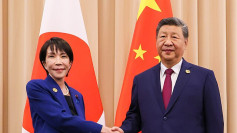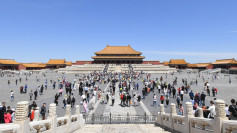The video game industry in China is experiencing a big boom this year despite the ongoing geopolitical turmoil. The highly lucrative market has reached sales revenues of around $16.19 billion for the first half of the year, an 8.6 percent increase from the same period last year.
According to a report from the Game Publishers Association Publications Committee, China now has an estimated 640 million video game players.
The number of players had surged by more than 6 percent year-on-year. Mobile game players accounted for a big chunk of the total number of video game players, estimated to be around 620 million.
Video games developed by local Chinese firms currently dominate the market, accounting for $13.08 billion of the total sales revenues generated for the first half of the year. Chinese-made video games also continue to increase its market share, taking up 80.8 percent this year from 76 percent last year.
Games developed by Chinese firms for the international market have also seen a rise in total sales. Total overseas market sales revenues for Chinese-made games increased by 20.2 percent year-on-year to $5.57 billion for the first half of 2019.
The overseas growth rate experienced by Chinese game developers is now apparently higher than the growth rate within their respective domestic markets.
Among the different types of games being published, the most popular remains to be role-playing games (RPGs) and multiplayer online battle arenas (MOBAs). These games account for 83 percent of the total Chinese sales revenues in the overseas market.
Chinese game developers are actively trying to penetrate the US market, currently the world's largest video game market. Companies such as Tencent and NetEase are heavily investing in foreign game firms and studios in an attempt to diversify their income and revenue structures. Last year, both companies reported total revenues of around $472 million from sales on the Google Play Store and Apple App Store in overseas markets.
Despite the rapidly growing industry in China, the country's developers still face stiff competitions from other Asian gaming juggernauts such as Japan and South Korea. Japan currently holds the highest portion of global gaming revenues with 79 percent, while China only has around 16 percent of the market.
Apart from Japan and South Korea, China could also be facing additional competition from emerging markets such as India in the near future. Games released from these emerging markets will undoubtedly challenge China's ability to produce innovative content and to maintain its growth both domestically and internationally.






